Welcome to Crete!
Short trips with scooter or quad near Hersonissos that you cannot miss
Hersonissos used to be a small harbor that served the need of the local farmers and fishermen. Over the years the small village grow and it became a small town and of course a popular tourist resort. On the west side of Hersonissos there is one of the most beautiful beaches on Crete with the name Sarandaris (12 min -4,7 km far from Hersonissos), which is worth visiting. You can easily visit Sarandaris with a scooter or a quad.
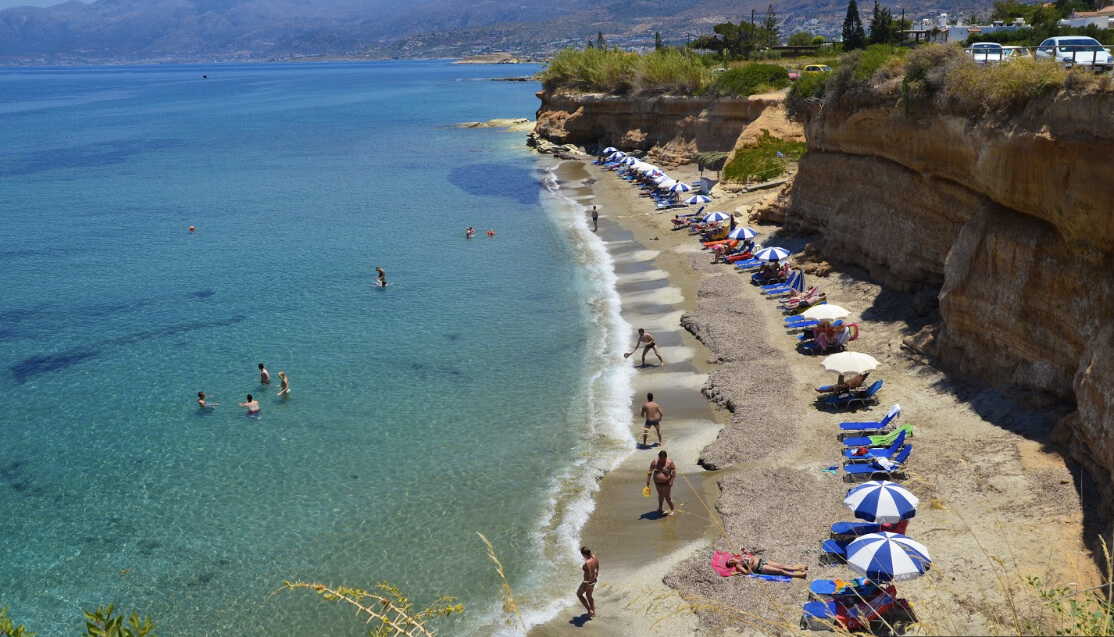
On the east side of Hersonissos you can do a very nice beachroad trip with a quad or a scooter. First village near Hersonissos is Stalida, a beaudiful and quiet village with a nice organised beach. After Stalida is Malia village. On the beachroad you can find a lot of cafeterias, restaurants and shops between Stalida and Malia. At the end of Malia just before the archeological place of Malia there is a natural beautiful sand-beach called Potamos (13 min -10,5 km far from Hersonissos) which is worth visiting.

Driving your scooter or quad you can continue your trip from the beachroad to go to Sisi (19 min -15,3 km far from Hersonissos), a small mediterranean traditional village. A beautiful balance of sea and mountains welcomes you to this quiet and traditional village with its narrow streets, old houses with bougainvillea flowers and colorful doors. Sissi is a true paradise for nature lovers. Next to Sissi is Milatos village (28 min -20,0 km far from Hersonissos). You can go at the beach side of Milatos where you can enjoy some fresh fish in the restaurants since it is a mainly fishermen village like Sissi or you can go to the mountain side of Milatos where you can make a stop to Milatos caves.
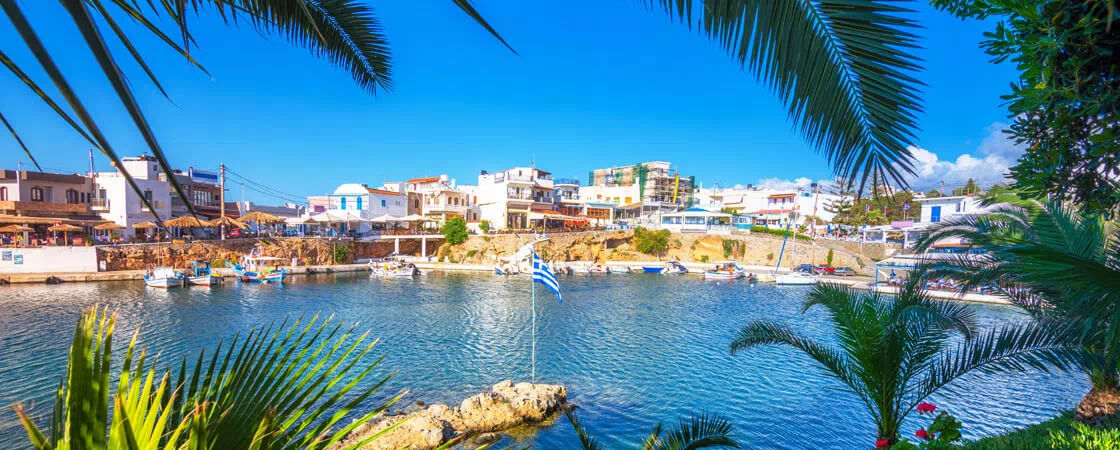
Another trip you can do with a scooter or a quad is to visit the traditional villages Koutouloufari, Piskopiano and Old Hersonissos (8 min -3,0 km far from Hersonissos). Small beautiful traditional villages with narrow streets full with restaurants with delicious food. Friendly people welcome you to their taverns there where you can taste some original Cretan traditional food with some homemade raki or wine.
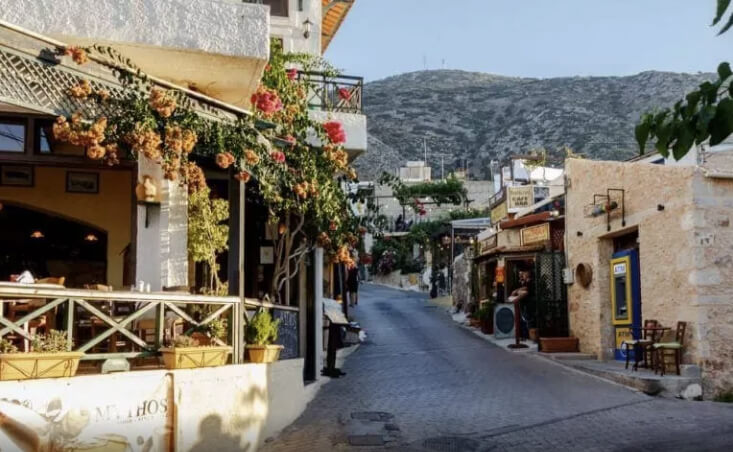
Longer trips that you can do with a scooter or with a car
A nice trip that you cannot miss is going to Agios Nikolaos- Istro – Elounda – Plaka. You can go there with a 125cc scooter or bigger and with a car too. Agios Nikolaos (40 min -37,8 km far from Hersonissos) is the biggest city of the region of Lasithi, East Crete. It’s a beautiful town next to the sea, popular among tourists for its beaches and the warm climate with a lot of sunshine. There are a lot of things to do here, a lot of markets, taverns and especially fish-taverns and of course amazing beaches nearby. The best one on the region lasithi is Voulisma Beach. You will be amazed from the vies and the gorgeous surroundings. An amazing sand beach to swim in crystal water.
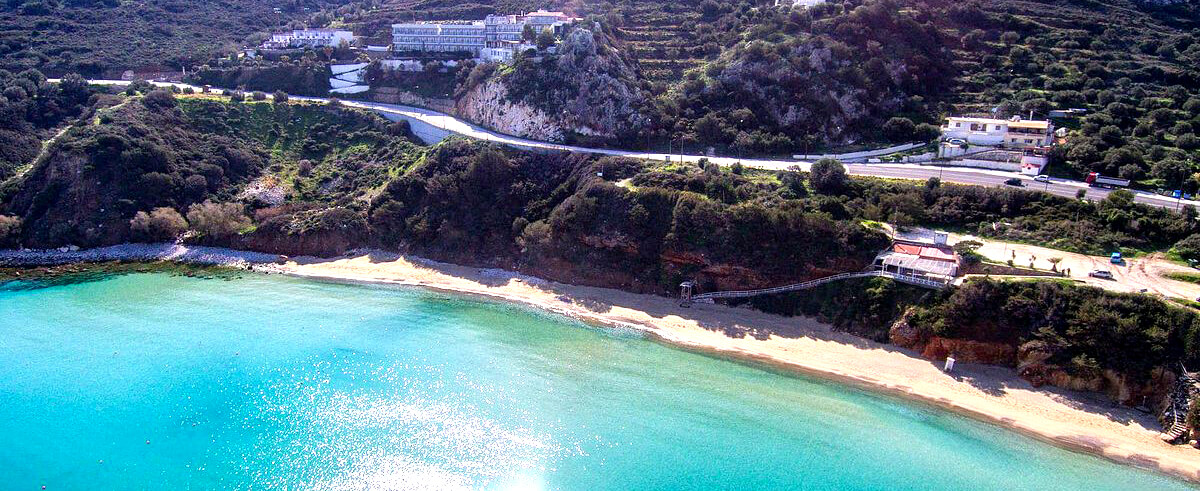
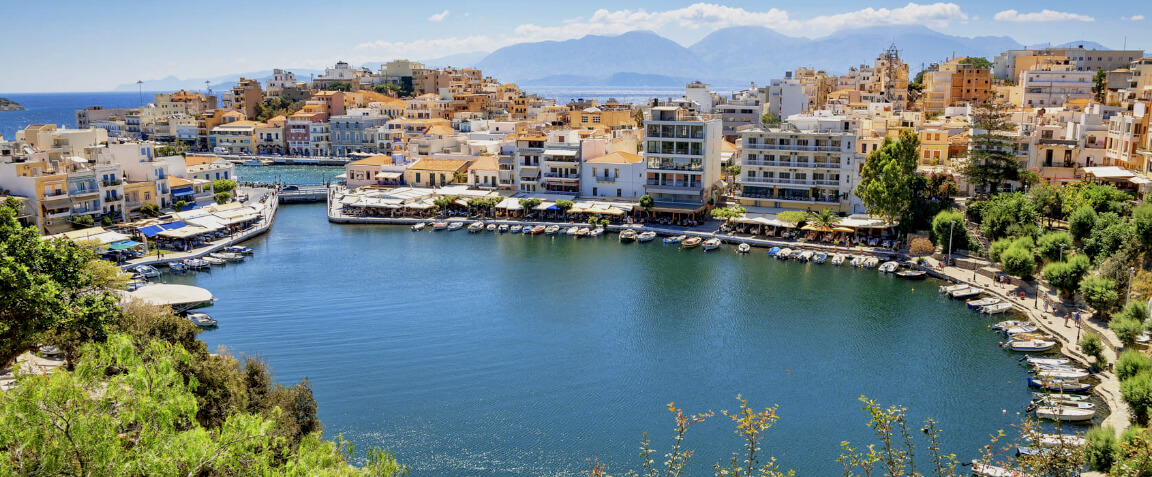
You can take the beach road of Agios Nikolaos to go to Elounda (47 min -46,1 km far from Hersonissos) to make sure that you don’t miss the panoramic view just before the village. Hidden on the eastern coast of Crete, Elounda is a pretty fishing village which is a great destination for a relaxing seaside getaway.
You’ll love Elounda if you’re looking for a traditional Greek resort which isn’t too crowded. You can continue your trip to the tiny but beatifull village Plaka too. Plaka is opposite of the small island called Spinalonga, the island of the lepers in Greece.
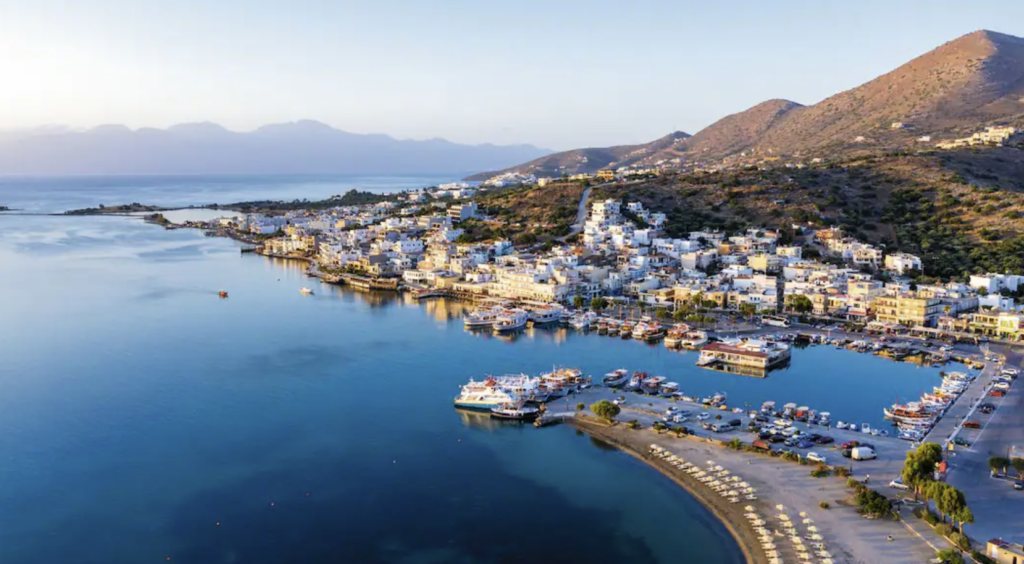
Visiting Knossos Palace (28 min -27,3 km far from Hersonissos) the biggest historic place on Crete is a must. When you visit the Palace of Knossos, you travel deep into European history. The oldest civilization in Europe, the legends of King Minos and the Minotaur and the palace artworks continue to inspire generations of artists to this day.
What you see is actually the second reconstruction of the largest Minoan palace in Crete, after the first one was destroyed by an earthquake around 1700 BC. This period, known as Neopalatial, coincides with the peak of the Minoan civilization.
The palace was extremely sophisticated and had sewage systems, luxurious, five-story houses and murals that decorated the walls in a unique way. It is said that it looks like a labyrinth and that’s why there is the connection with the myth of the Minotaur. Eventually, this too was destroyed by an earthquake and abandoned forever around 1600 BC.
The site is very large (about 43,000m2) and once housed 1,300 rooms which were connected by corridors around a main courtyard. For this reason, the best way to explore it and learn all its secrets is with a certified guide.
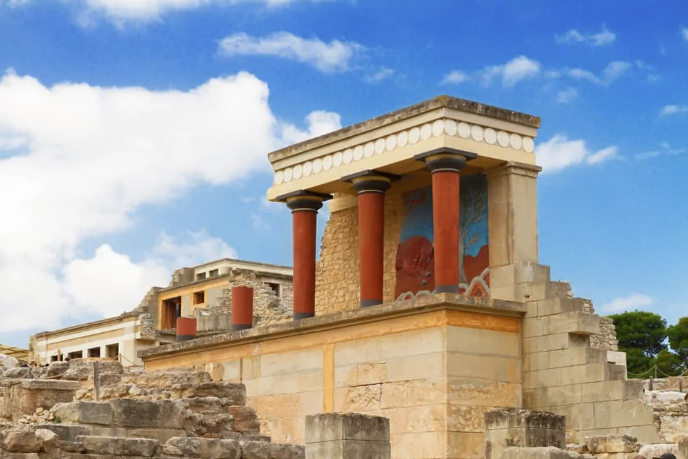
You can do a little longer trip with a car or with a big scooter to Matala (2 hours and 8 min -102 km far from Hersonissos) which is located in the south side of Crete at the exit of a small valley. This is one of the most popular tourist tours and Matala the most visited beach as this beach became famous for the rock caves and the `70s Easy Life of the hippies. Matala has a lot of small caves that used to be hippies houses then. Of course there is a a very nice beach next to the caves too. You can also find there a lot of small markets with homemade products.
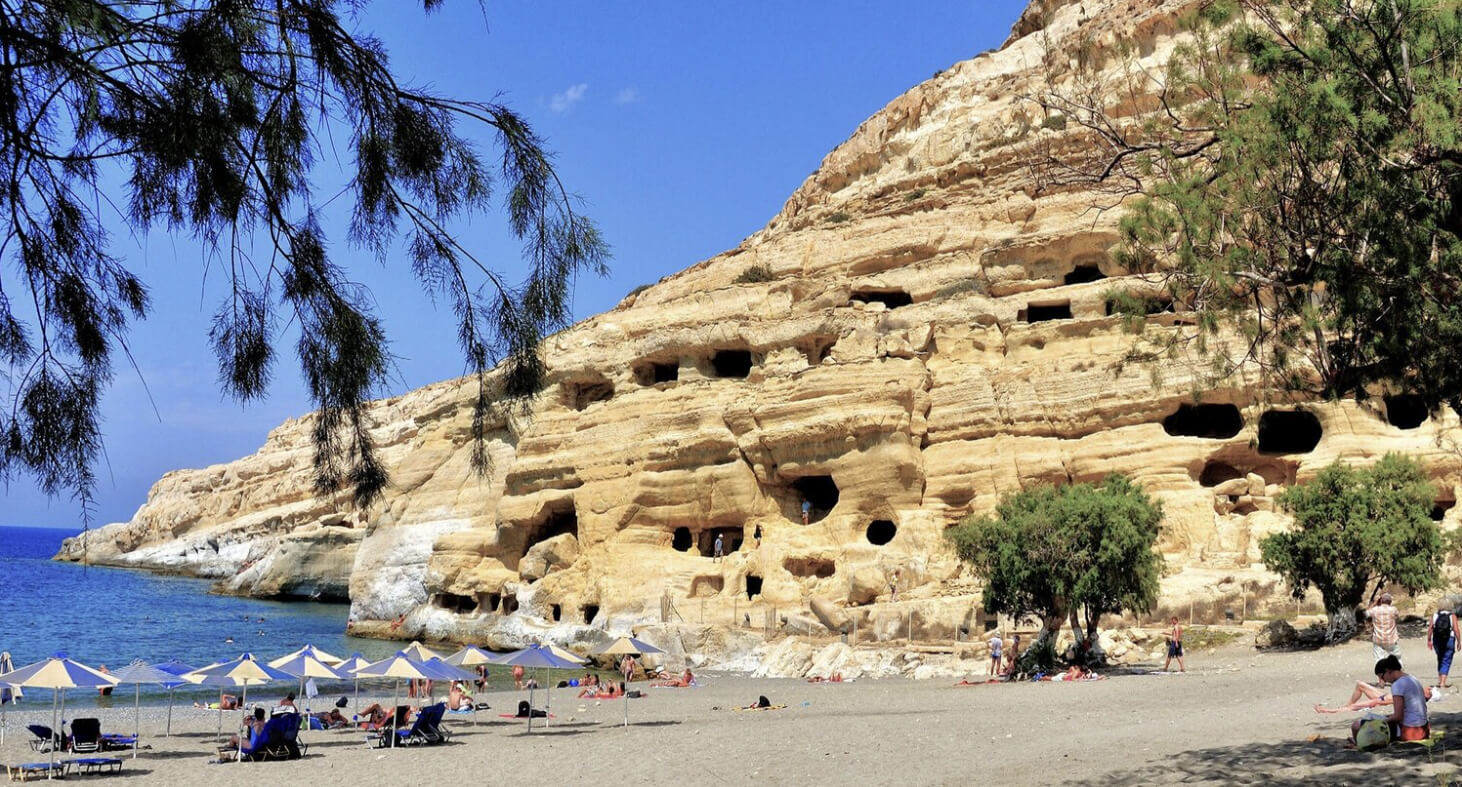
One of the most beautifull places to visit especially for nature lovers is Preveli (2 hours and 6 min – 138.1 klm far from Hersonissos). You can visit this place with a car of with a 300cc scooter. Make sure you take the asphalt road with is much better than the off-road way to go there. Pure nature place with it’s unique Palm forest next to the river which ends up to the sea. You can enjoy your walk in the little palm forest there or you can find your place next to the river. It is not organised like other places but that is something that keeps the place pure.
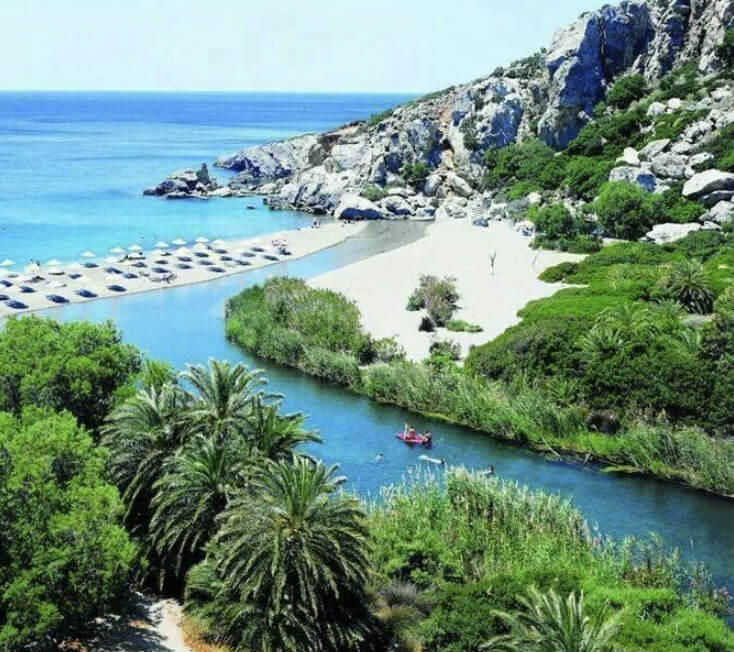
About Crete
Crete is the biggest and one of the most beautiful islands you can find in Greece
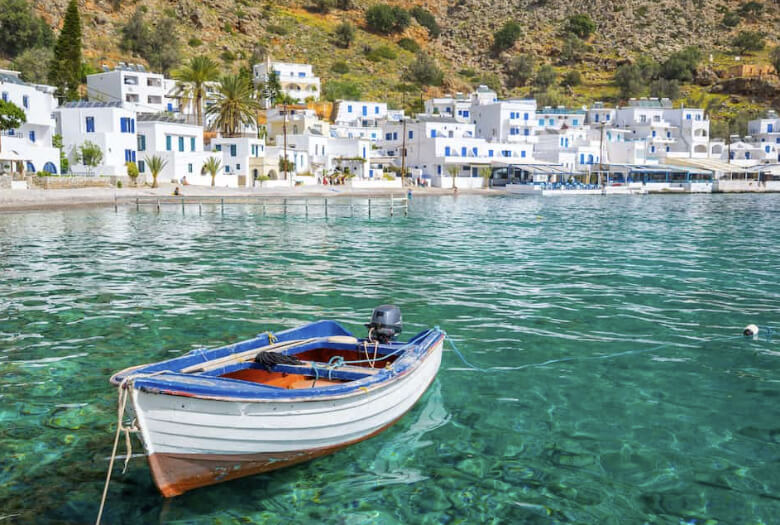
Thanks to its singularity, the Cretan landscape is of a unique charm, attracting the visitor to explore its beauties. Its variety and the alternations present in its geomorphology make it unique; as for the mountainous landscape, although it is less known then the maritime, which is the main reason Crete attracks thousends of tourists each year, it hides rare natural beauties and offers the alternative for climbing , and great walking tours. It is worthwhile for everyone to dedicate a part of the holidays to experience really awesome adventurous explorations. As for the acquaintance with the unknown mountainous landscape, one can undertake such a tour with safety, since there are many tourist agencies of alternative tourism organizing such excursions on our island.
Amongst of the most extraordinary beauties that open out before the eyes of the visitor in this so particular landscape are its exquisite gorges. As the soil underwent various alterations through the years – at rocky or mountainous places a number of collapses had occured, forming deep cracks and steep narrow passes – the Cretan gorges and ravines of a unique wild beauty were created.
When the astounded visitor attemps to go through such gorges he has the sense that he is in the jungle, since the luxuriant vegetation covers the vertical masses of rocks which reach unrealistic height most of the times. while crystalclear waters gush out of secret sources and stream into narrow, mazy passes. The charm of this wild landscape is so great that has made them popular to nature lovers worldwide.
Let us undertake a short tour within the Cretan landscape and meet the most renown gorges:
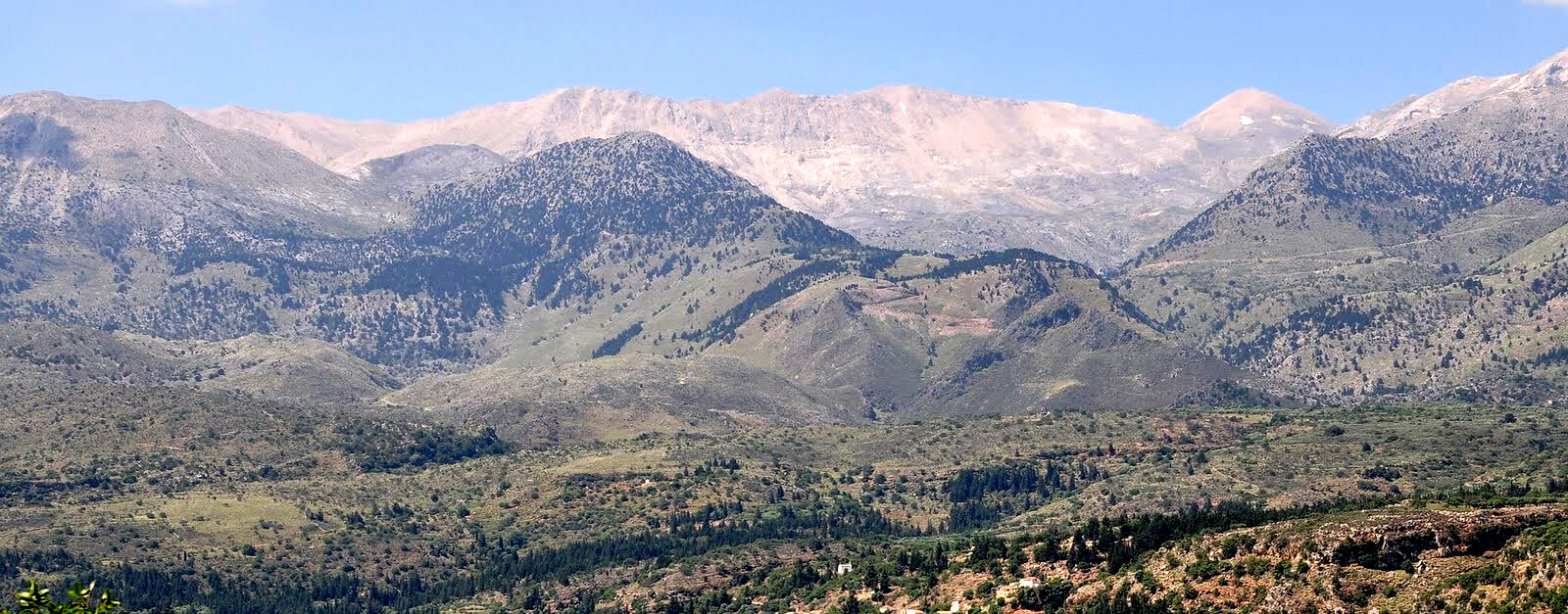
Starting form the western side of the island, the huge, imposing massif of Lefka Ori rises before us. With its peaks reaching 2000 metres, it suddenly plunges at the southern coasts, forming impressive gorges, as is the famous gorge of Samaria, the gorge of Tripiti, the gorges of Eligia, Agia Irini, Klados etc. Although that over 1000 metres the landscape is treeless – “Madares” means “bare mountains” – vegetation is luxuriant in the gorges.
More specifically, the gorge of Samaria is the largest in Europe, stretching for 18 kilometres. Until the mid-twentieth century, it was a virgin landscape of an unaltered ecological balance and with just a few visitors. Nowadays, each year frommay to october, thousands of visitors go through it. Despite the flood of tourists in the summers months – when it passage is allowed – and the necessary and appropriate human intervention to make it more accessible, here is the unique habitat worldwirde os the wild goat “aegarus”, alsopopular amongst the native population as “kri-kri” or “agrimi”.
The only national forest of Crete surrounds the gorge of Samaria, with an area counting to 48.550 thousands os square kilometers. It is a habitat, where a great part of the rich Cretan fauna and flora is preserved.
In the east, the gorge of Imbros and the gorge of Katre are the last border before the steep slopes of Lefka Ori. In the south, there are other exquisite sloping down the Libian Sea.To the east, the visitor meets the impressive gorge of Kotsyfosand the Kroutaliotiko with its ambundant water rushing on. All the roads leading us to the historical monstery of Preveli cross right there. Always following the same orientation, from the Northwest to the East, the main massif of Psiloritis expands before us. Its highest peak reaches 2.456 metres, while on its steep slopes live wild mammals, amongst them the wild cat (Felix Agrius).
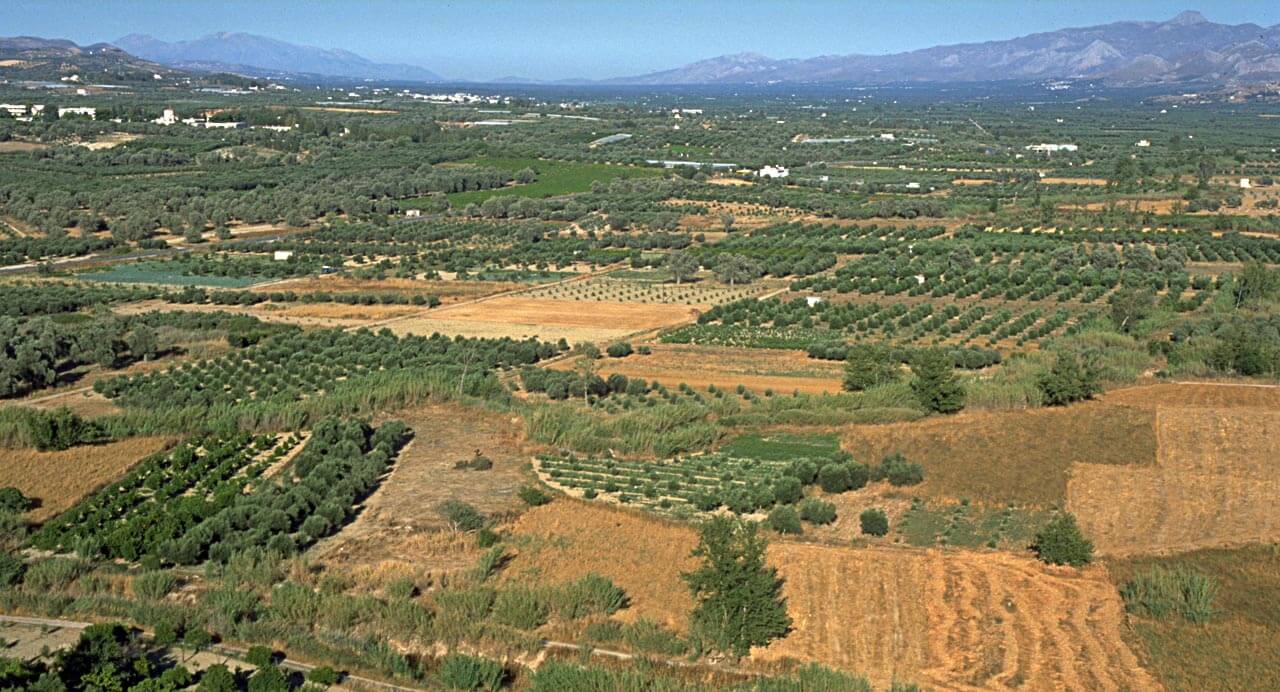
At the South of Psiloritis and towards the east, after the fertile plain of Messara and after we pass by the imposing Asterousia mountain – yet another mountainous paradise that remains to be explored – the slopes of the Dikti mountain rise. Between the massif of Dikti and the mountains of Thripti streches the narrowest part of the island, that is the valley of Ierapetra, while the mountains of Thripti enclose the fabulous gorge of Cha. This gorge was inaccessible recently, when a group of competent climbers managed to go through it succesfully. In the Northeast of Thripti the mountain Oros rises and suddenlu ends on the northern coasts of the provice Sitia.
Besides all places we have reported, the visitor has still other alternatives. In the South of Ghania and on the way to Therisso one can meet the wonderful gorge Therissano, on the way to Fragokastello we meet the gorge of Asfendados. When we go down from Ghora Sfakion to the coast, the beautiful goge of Aradena is another challenge to the visitor, whilefrom Kastelli to Paliochora, another deep gorge called Topoliano still keeps it secret paths, luring the visitor to discover its beauties.
There are still numerous other places os an exquisit beauty to visit. Many more are continuously brought into light, thanks to the care of specialized persons that undertake theit exploration, composing pictures of unrivalled charm. Nevertheless, wild nature hides many dangers, especially as far as the “non-initialized” visitors are concerned. In some cases one must be trained on specific climbing techniques, while to go through those gorges requires many hours of walking, hence a good sustenance. Consequently it is absolutely necessary for the visitor to gather the appropriate information on a given walking-tour: hours of walking, specific geomorphologic conditions, grade of difficulty of the given tour, before he or she involves in such an adventure…
